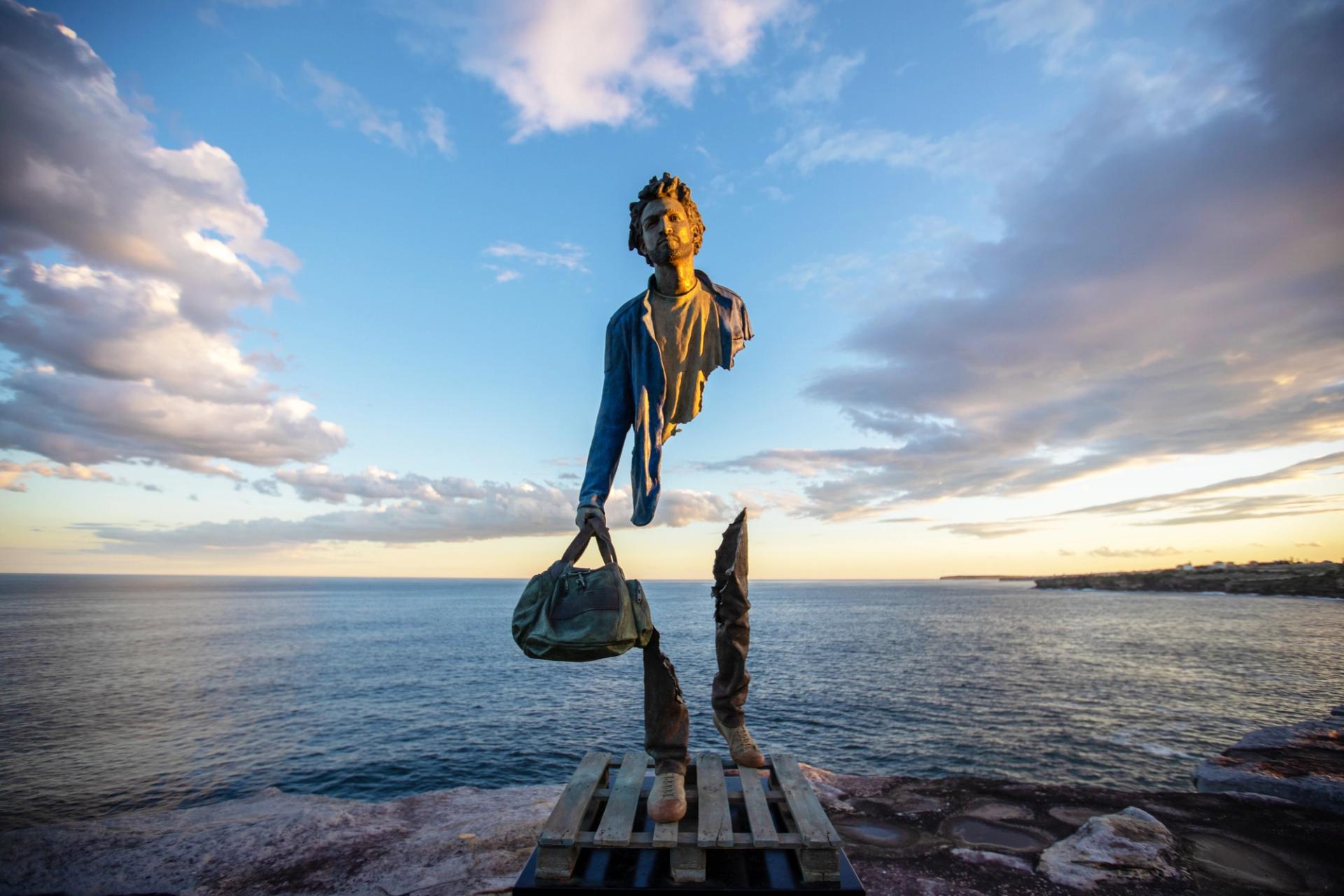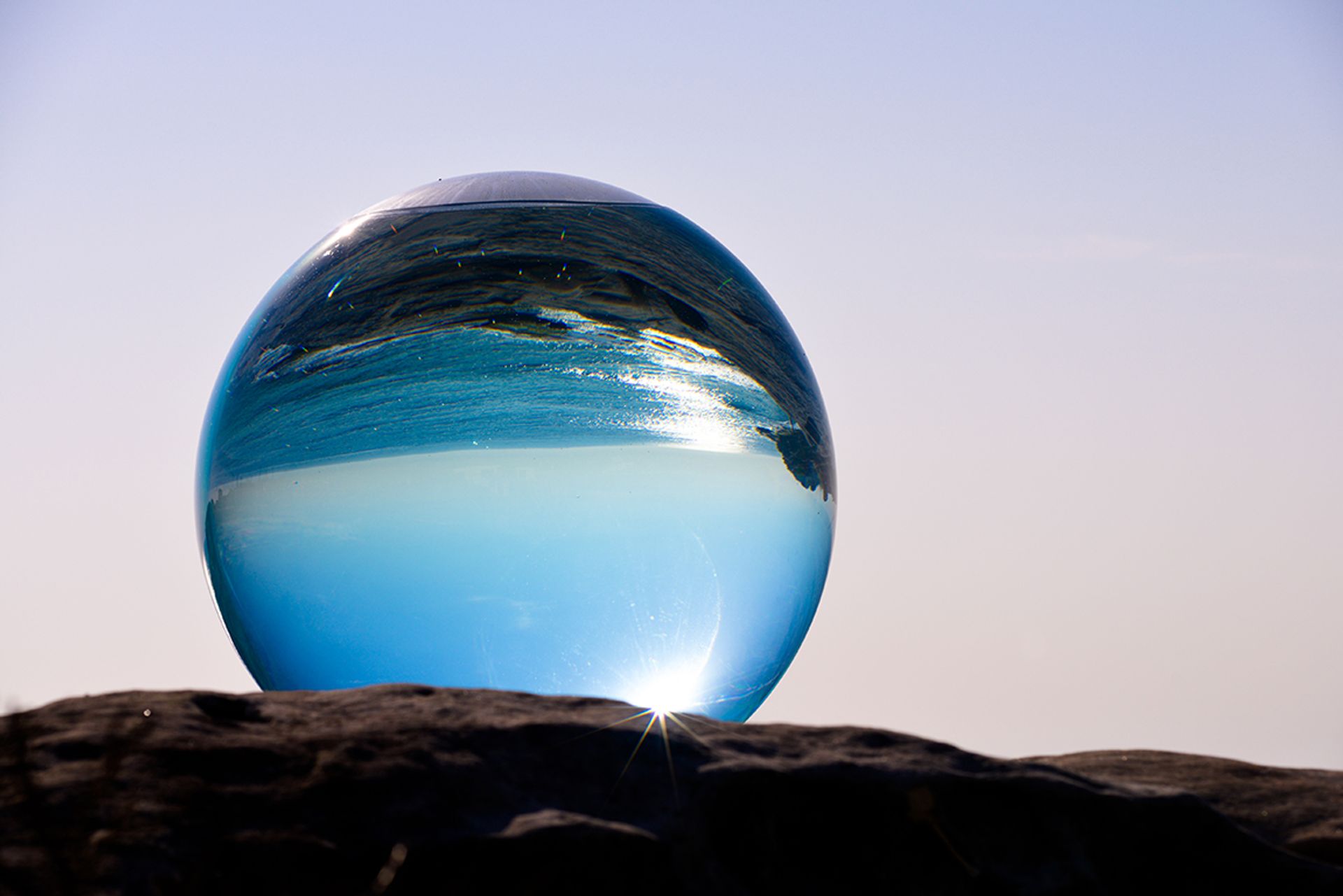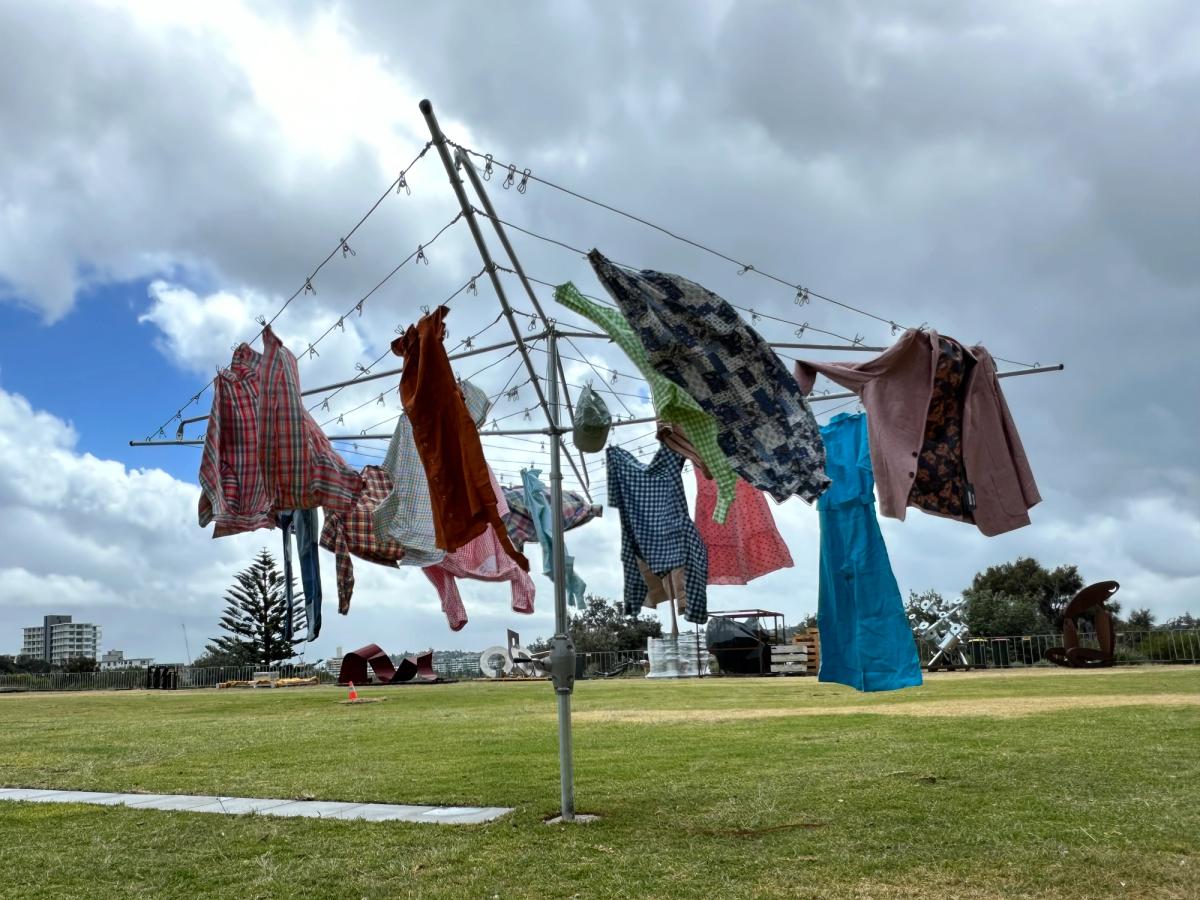A much-loved icon of Australian family life will take centre stage when the 25th edition of the Sculpture by the Sea exhibition opens along the Bondi Beach clifftops today.
The Hills Hoist is a famous brand of rotary clothesline invented in Australia in 1945 and later listed as a National Treasure by the National Library of Australia.
The Sydney artist Lucy Barker, one of 100 artists in Sculpture by the Sea this year, will install a Hills Hoist in an ocean-facing park and hang items of pre-loved clothing on it.
Visitors will be invited to remove an item of clothing from the work and take it home. They will also be encouraged to bring in some old clothes (clean and in good condition) to peg on Barker’s clothesline for the next person to take.
The piece, whose working title is Online Clothes Swap, will be centrally located in Marks Park along the cliff trail.
For Barker, Online Clothes Swap represents an egalitarian circular economy. “This work is a social experiment symbolic of changing values and the desire to find new sustainable ways to live,” he says. “The title is a play on the idea that while so much of our lives have been transferred to the digital realm, this interactive installation takes the audience back to tried and true analogue ways.”
Hills sponsored Barker by providing her with a new Hills Hoist from its “heritage” range. “It’s a seven-stringer with fifty metres of line length,” Barker says.
One of Sculpture by the Sea’s most popular creations was inspired by another feature of Australian vernacular life. In 2006, a Sydney-based collective called The Glue Society created a melted ice cream van, which flowed off the pavement and on to Tamarama Beach, the next strip of sand south of Bondi. Called Hot with a Chance of a Late Storm, the work is making a comeback this year after undergoing restoration.

The Glue Society, Hot With A Chance Of A Late Storm (2006) Photo: Louise Beaumont
The founder and director David Handley says over Sculpture by the Sea averaged around 450,000 visitors during its two-week run and brought millions of dollars into the economy.
“If we have one or two very social media worthy images, more and more people come because it's just gone nuts on social media,” Handley says.
Other Insta-famous works have included French artist Bruno Catalano’s Benoit, a bronze sculpture in last year’s event, showing a young man walking along with a bag. Most of the man’s body appears to have been blasted away, giving the work a Surrealist appearance. Benoit was from Catalano’s Les Voyageurs series, which has been exhibited in various European locations.

Bruno Catalano, Benoit (2022) Photo: Charlotte Curd
Another crowd favourite was a two-tonne work, which turned the panoramic views of Bondi upside down. Lucy Humphrey's Horizon, was a 1.5 metre hollow sphere made from polished acrylic and containing more than 1800 litres of tap water.
When looked through, the Pacific Ocean appeared to be at the top while the sky was at the bottom.

Lucy Humphrey, Horizon (2013) Photo: Clyde Yee
Sculpture by the Sea opened a separate event in Cottesloe, Western Australia, six years after Bondi. A biennial edition of Sculpture by the Sea was also held in Aarhus, Denmark, between 2009 and 2015.
“We get approached every two or three weeks to do Sculpture by the Sea somewhere overseas,” Handley says. “Almost always these shows don't go ahead because of the practicalities and cost.”
Four artists have shown in Sculpture by the Sea 20 times. Lucy Barker is among the 31 who have been in it ten times.
So far as Handley knows, however, the event has only ever boasted one future princess. After Crown Prince Frederik of Denmark met the Australian, Mary Donaldson, one of their first dates was a walk around Sculpture by the Sea, Bondi, in 2000.
The couple married in 2004, transforming Hobart-born Donaldson into HRH The Crown Princess.
Sculpture by the Sea runs until 6 November, admission is free, with sculptures placed along the cliffs between Bondi and Tamarama Beaches, and on the sands of Tamarama Beach itself.


